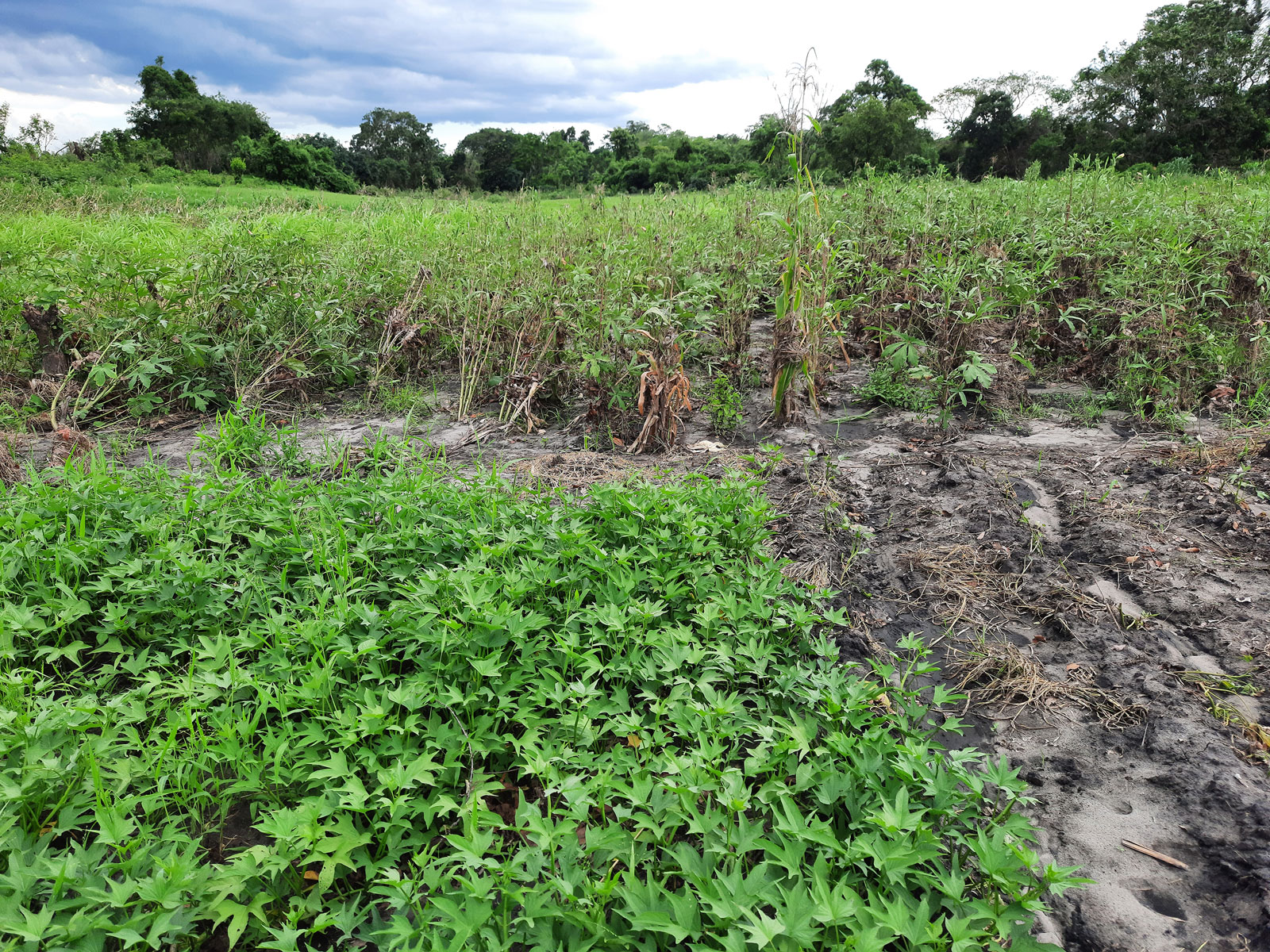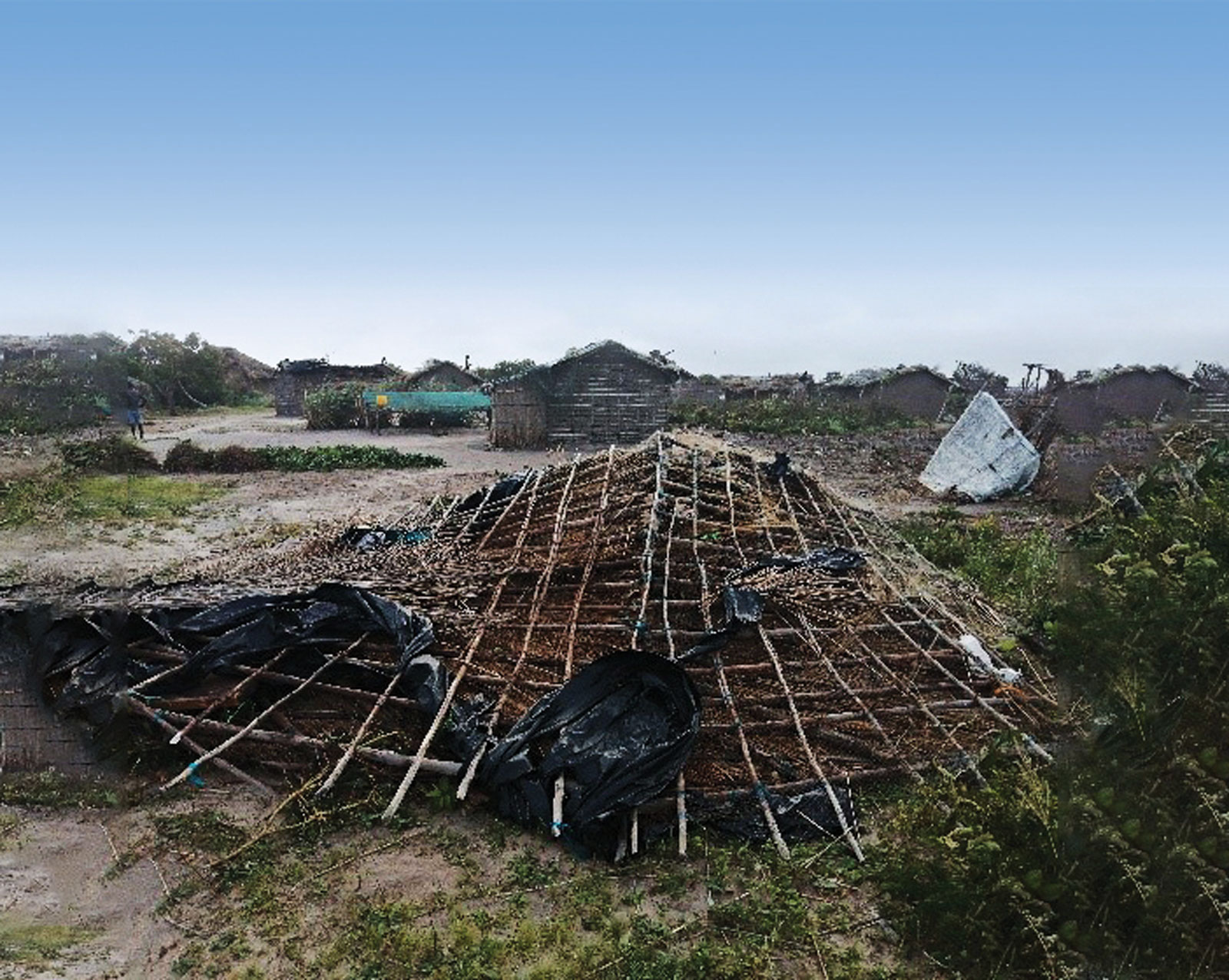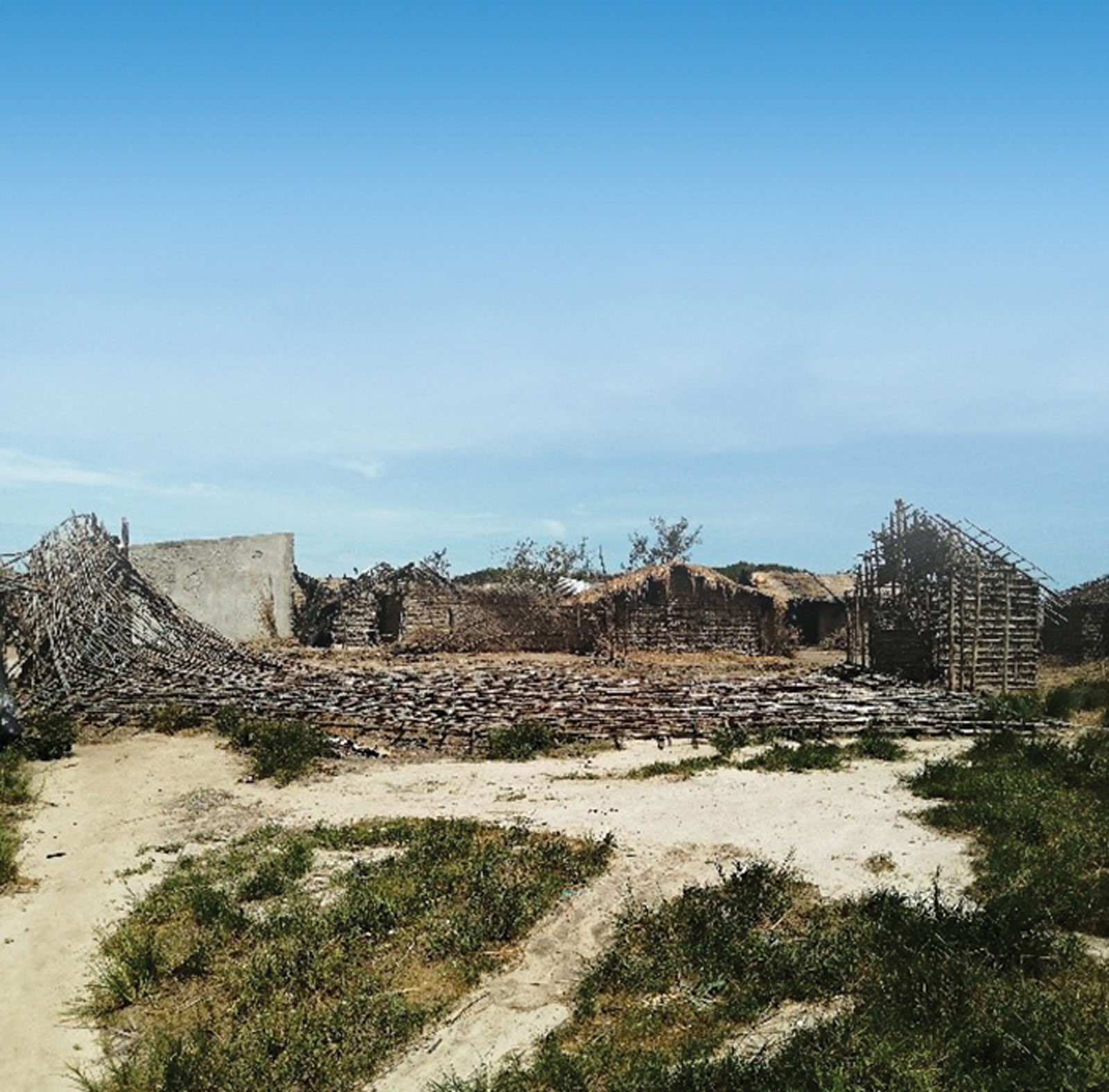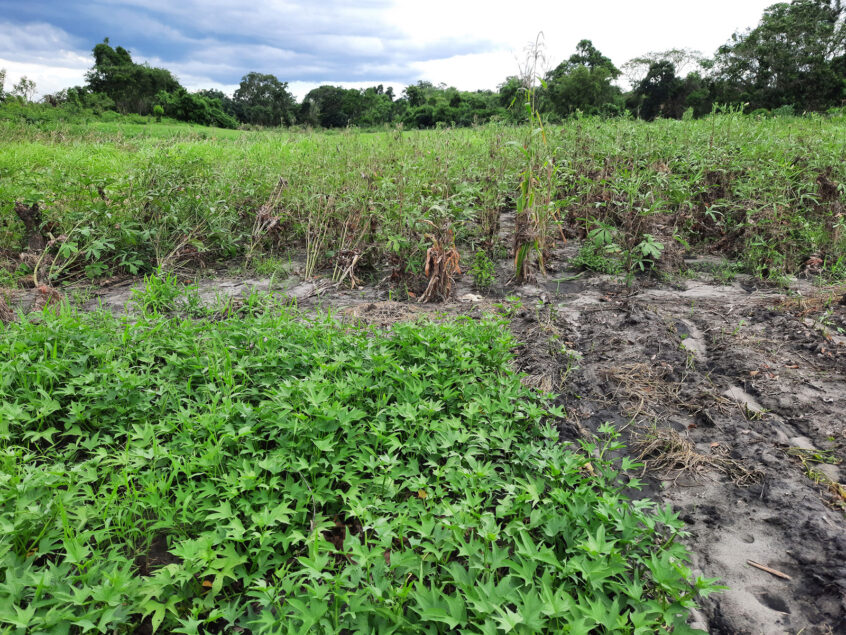As a ground hugging crop that produces food underground, the sweetpotato is ideal for resisting the ravages of tropical storms. And thanks to its short cycle, planting the sweetpotato after extreme weather events has helped farmers bounce back from shocks like Cyclone Idai in Mozambique and Typhoon Ompong in the Philippines. Sweetpotato varieties are also being bred and released for salt- and drought-resistance, making the sweetpotato an important crop for adapting to climate change.

Extreme weather events (such as typhoons) are increasingly frequent. For example, Buzi district in central Mozambique was struck by Cyclone Idai in March 2019, only to be devastated in December 2020 by Cyclone Chalane. Around the world, storms are becoming more destructive, likely because of climate change. Typhoons and cyclones damage crops in the coastal tropics, threatening food security as a smaller harvest means there is less to eat and less to sell. Washed out roads and bridges make it harder to get to market to sell the produce that is available, so farmers lose the income they need to buy school supplies, medicines and certain foods.
Crops like the sweetpotato, whose product grows underground, resist strong winds and heavy rain better than do above-ground crops and trees. The ground hugging sweetpotato vines largely escape damage from typhoons and cyclones, allowing rural households to still harvest some food to eat and to sell. And because the sweetpotato matures quickly, resource-poor families can plant it after a storm and start to produce food soon. Two months after planting, families can begin to eat the plant’s nutritious leaves, and after three months, the high-calorie, vitamin-rich sweetpotato roots are ready to harvest. The sweetpotato requires less management and fertilizer than many crops, which also makes it an ideal investment after a disaster, when time and money are often scarce.
Cyclone Idai, which hit southern Africa on 15 March 2019, left more than 1,000 people dead and caused $2 billion worth of damages, including widespread crop loss. A collaboration between the International Potato Center (CIP) and the International Committee of the Red Cross (ICRC) helped 7,500 farmers in Manica Province, Mozambique, by distributing 40 tons of orange-fleshed sweetpotato (OFSP) planting material. The high-yielding, CIP-bred OFSP varieties distributed by the Red Cross are rich in vitamin A, which is vital for healthy child development. Now USAID is helping CIP to rebuild the seed system in Sofala, benefitting 40,000 households.


Super Typhoon Ompong made landfall in Luzon on 15 September 2018, and wreaked havoc across the northern Philippines. Eighty-two people were killed, and 800,000 households were affected. There was at least $493 million damage, just to agriculture. Even after taking a beating from the typhoon, most sweetpotato plants were still green and healthy; 97% of rice farmers reported losses, but only 14% of sweetpotato growers. Rice farmers lost on average 51% of their standing crop, but sweetpotato growers saved all but 8% of their crop. Other root crops, like cassava, taro and yam, also fared better than cereal crops.
“The sweetpotato by nature stands up to stormy weather, but climate change is also making drought more common. RTB is also breeding sweetpotato varieties that are drought-tolerant and also tolerant to salinity. This helps to make the sweetpotato doubly able to meet the challenges of a changing climate,” says Maria Andrade, of CIP.
SHARE THIS

